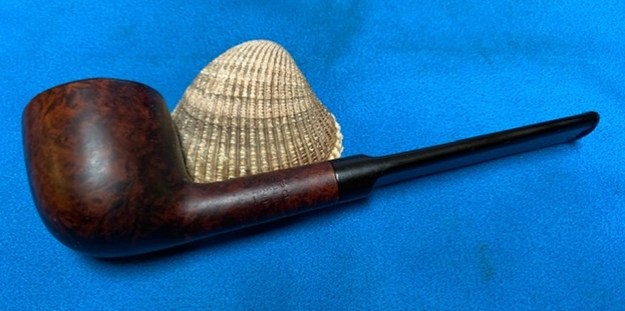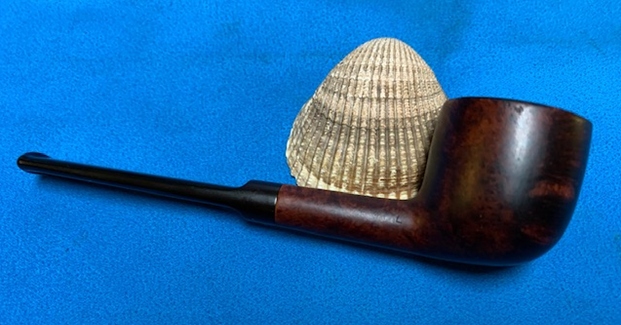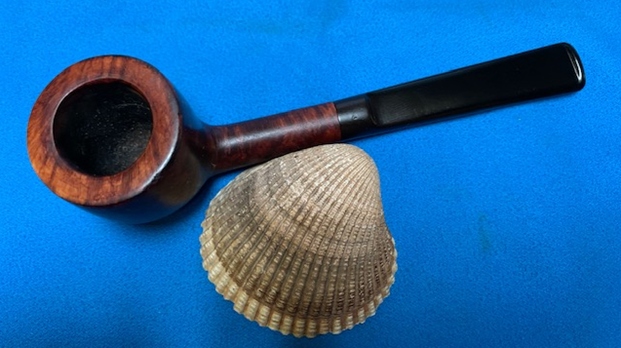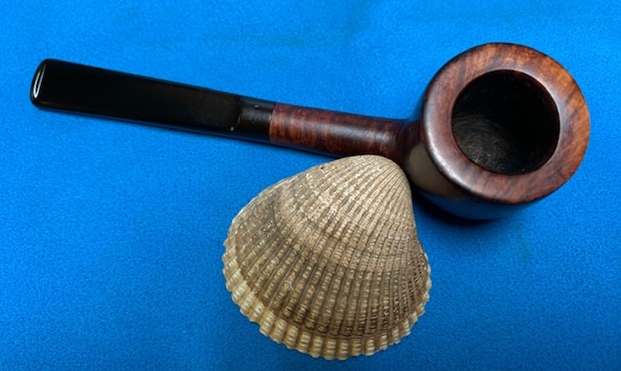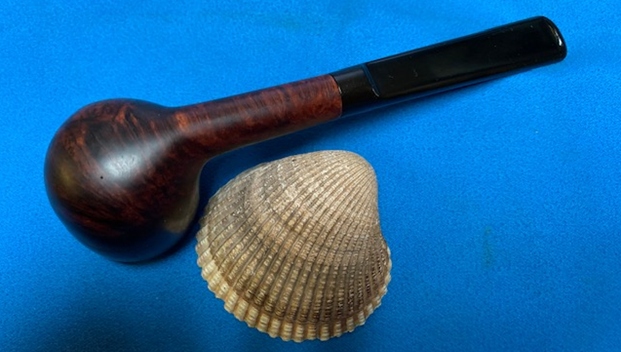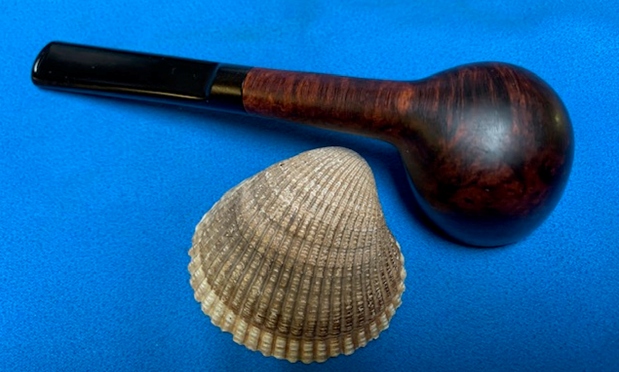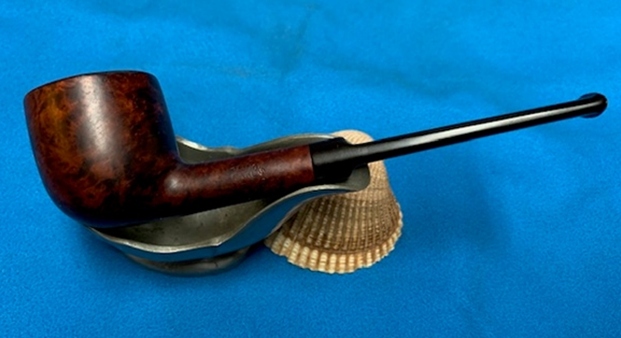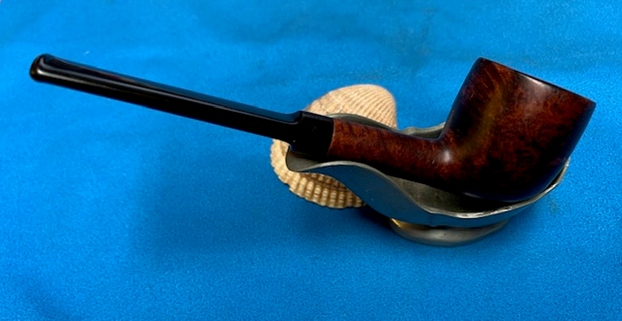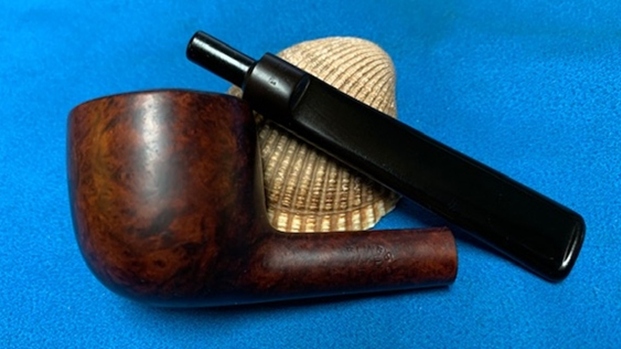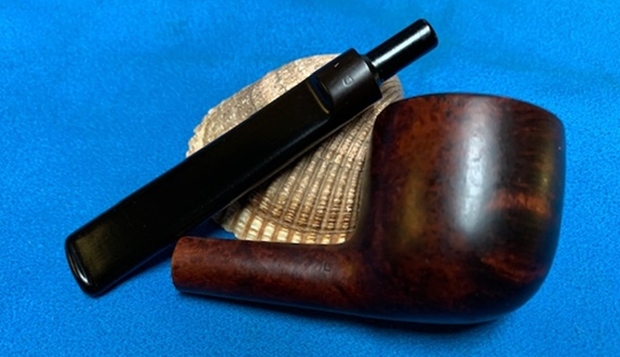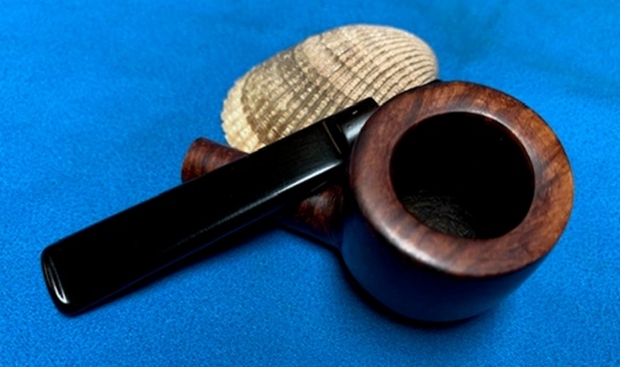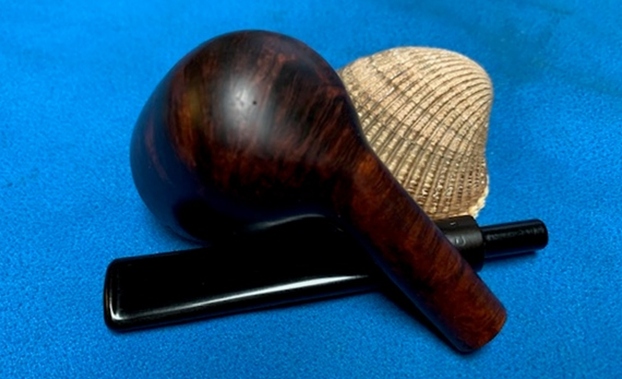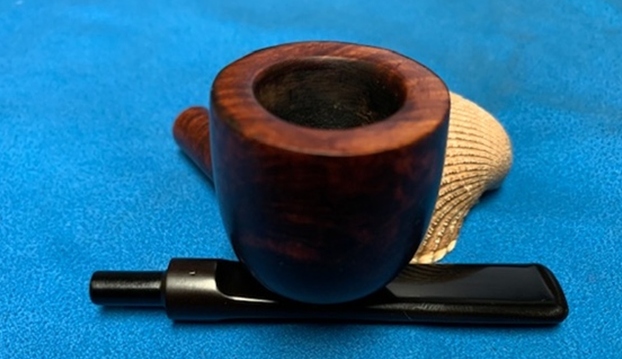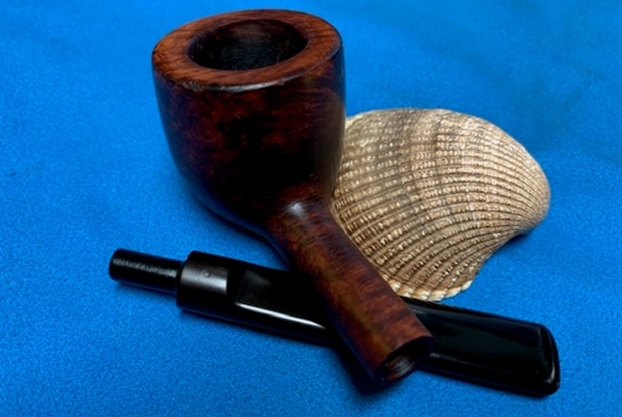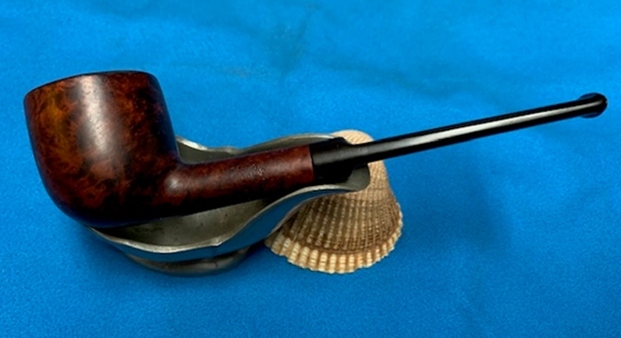Blog by Steve Laug
 The last briar pipe I have chosen to work on from Bob Kerr’s Estate is a Barling’s Make 1559 Pot with a Barling Cross on the top of the saddle stem. It is the last of Bob’s Barling pipes. (Bob’s photo is to the left). If you have not “met” the man and would like to read a bit of the history of the pipeman, his daughter has written a great tribute that is worth a read. Because I have included it in most of the restorations of the estate to date I thought that I would leave it out this time. Check out some of the recent Dunhill restoration blogs (https://rebornpipes.com/2020/01/01/restoring-the-last-of-bob-kerrs-dunhills-a-1962-dunhill-bruyere-656-f-t-bent-billiard/).
The last briar pipe I have chosen to work on from Bob Kerr’s Estate is a Barling’s Make 1559 Pot with a Barling Cross on the top of the saddle stem. It is the last of Bob’s Barling pipes. (Bob’s photo is to the left). If you have not “met” the man and would like to read a bit of the history of the pipeman, his daughter has written a great tribute that is worth a read. Because I have included it in most of the restorations of the estate to date I thought that I would leave it out this time. Check out some of the recent Dunhill restoration blogs (https://rebornpipes.com/2020/01/01/restoring-the-last-of-bob-kerrs-dunhills-a-1962-dunhill-bruyere-656-f-t-bent-billiard/).
When I think of Barling’s pipes this is the shape that sticks in my mind. This pipe is stamped Barling’s in an arc [over] Make [over] the shape number 1559 on the left side of the shank. On the right side next to the shank/bowl junction it is stamped with the letter ‘L’. The saddle stem had a Barlings Cross on the top. The stem is oxidized, calcified and has light tooth marks and chatter on both sides near the button. The exterior of the bowl is grimy and dirty. There is a thick cake and lava overflow on the rim top. It is thick enough that it is hard to know if there is any damage on top and edges. Jeff took photos of the pipe to show its general condition before he did his cleanup. 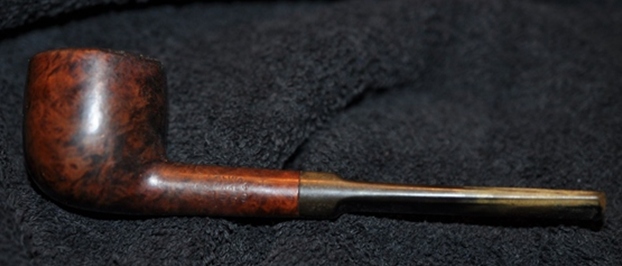
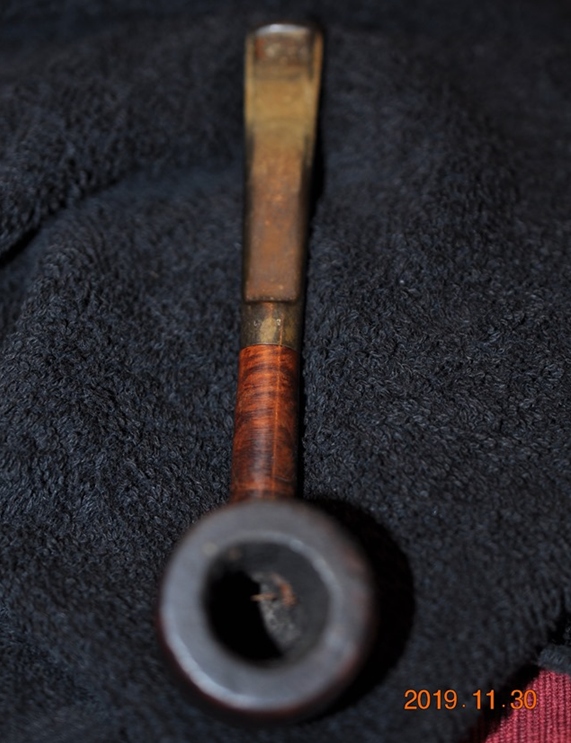 The exterior of the pipe was very dirty – grime and grit ground in from years of use and sitting. The rim top was covered with a coat of thick lava that overflowed the bowl. There was also some darkening on the rim top and damage to both the inner and outer edge of the bowl. The bowl itself had a thick cake with flecks of tobacco stuck in the cake on the sides.
The exterior of the pipe was very dirty – grime and grit ground in from years of use and sitting. The rim top was covered with a coat of thick lava that overflowed the bowl. There was also some darkening on the rim top and damage to both the inner and outer edge of the bowl. The bowl itself had a thick cake with flecks of tobacco stuck in the cake on the sides. 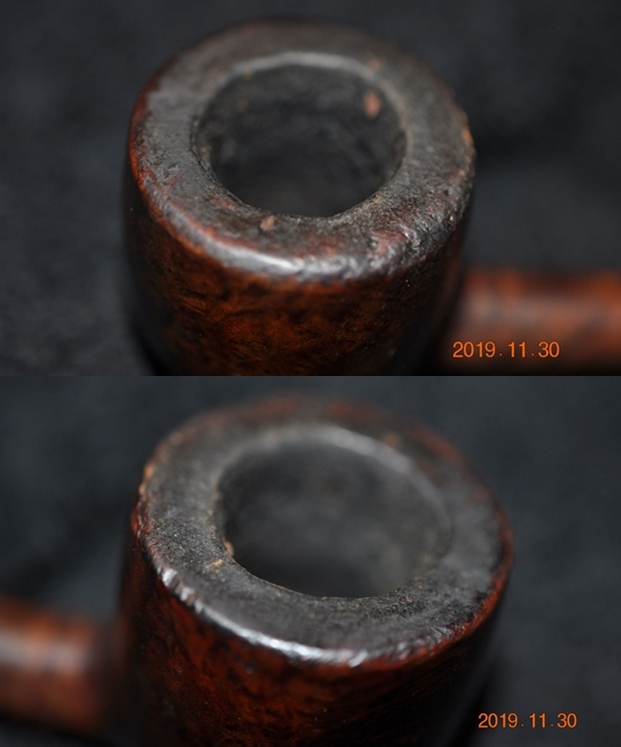 Jeff took photos of the sides and the heel of the bowl to give a better feel for the condition of the bowl.
Jeff took photos of the sides and the heel of the bowl to give a better feel for the condition of the bowl.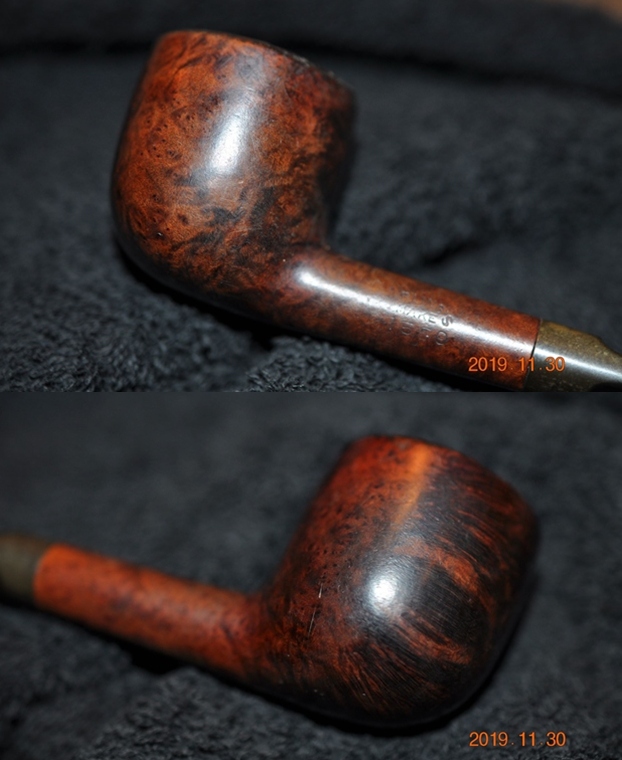
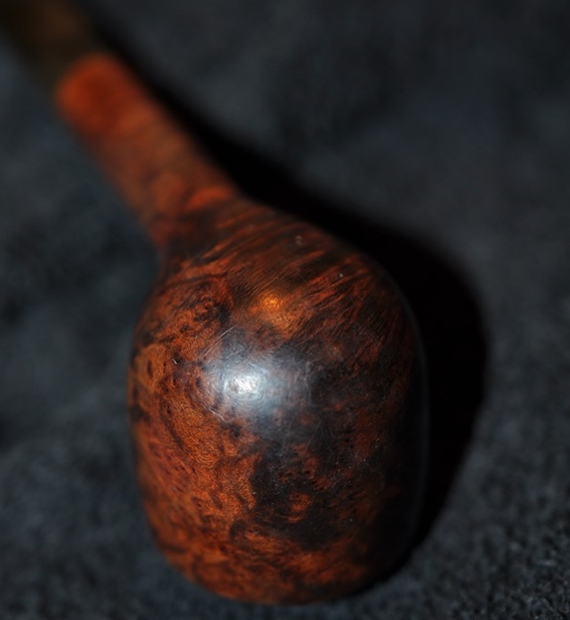 The next photos show the stamping on the sides of the shank and it is very readable. It reads as noted above. The Barling’s Cross is visible in the last photo of the top of the saddle stem.
The next photos show the stamping on the sides of the shank and it is very readable. It reads as noted above. The Barling’s Cross is visible in the last photo of the top of the saddle stem.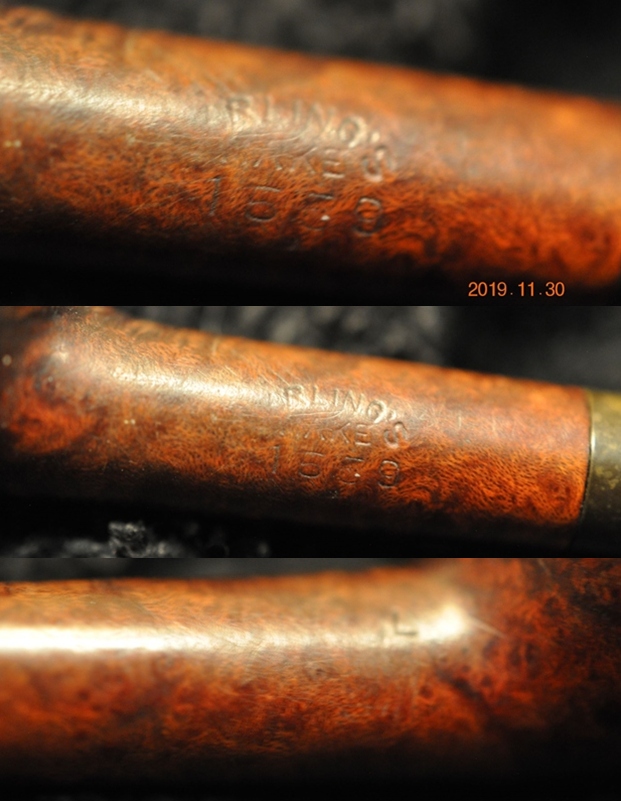
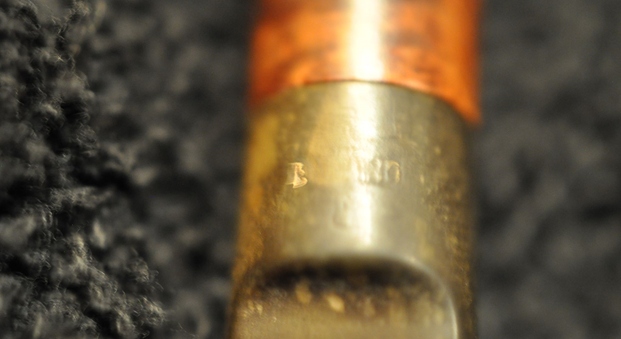 The stem was dirty and extremely oxidized, calcified and had tooth marks on both sides ahead of the button. It was not nearly as chewed the other pipes in Bob’s estate.
The stem was dirty and extremely oxidized, calcified and had tooth marks on both sides ahead of the button. It was not nearly as chewed the other pipes in Bob’s estate. 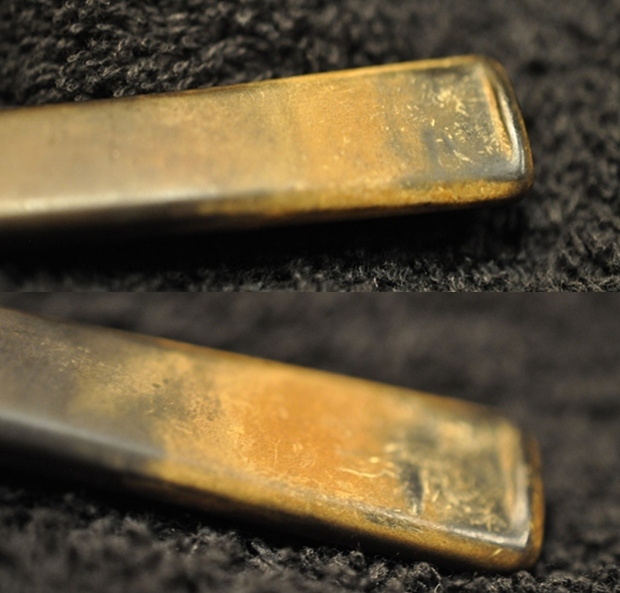 Before doing cleanup work on the pipe I decided to do some research on the pipe. I turned to Pipedia (https://pipedia.org/wiki/Barling#Size_Stampings🙂 and read the section on the rough outline on the history of the brand that links the brand with the English section of the company. I was interested in L stamp on the right side of the shank. I quote:
Before doing cleanup work on the pipe I decided to do some research on the pipe. I turned to Pipedia (https://pipedia.org/wiki/Barling#Size_Stampings🙂 and read the section on the rough outline on the history of the brand that links the brand with the English section of the company. I was interested in L stamp on the right side of the shank. I quote: From the above I knew that the pipe came out after 1941 when the range of sizes expanded to include the “L” for Large. It was made during the Family Period which ended in 1962. Now it was time to work on the pipe.
From the above I knew that the pipe came out after 1941 when the range of sizes expanded to include the “L” for Large. It was made during the Family Period which ended in 1962. Now it was time to work on the pipe.
I really glad that Jeff helped me work through this estate of over 125 pipes to clean from Bob’s estate I took a batch of them to the states with me when I visited and left them with Jeff so he could help me out. Jeff cleaned the pipes with his usual penchant for thoroughness that I really appreciate. Once he finished he shipped them back to me. Jeff reamed it with a PipNet pipe reamer and cleaned up the reaming with a Savinelli Fitsall Pipe Knife. He scrubbed out the internals with alcohol, pipe cleaners and cotton swabs until the pipe was clean. He scrubbed the exterior of the bowl with Murphy’s Oil Soap and a tooth brush to remove the grime and grit on the briar and the lava on the rim top. The finish looks very good with good looking grain around the bowl and shank. Jeff scrubbed it with Soft Scrub and soaked it in Before & After Deoxidizer to remove the oxidation on the rubber. When the pipe arrived here in Vancouver for the second stop of its restoration tour it looked a lot better. I took photos before I started my part of the work. 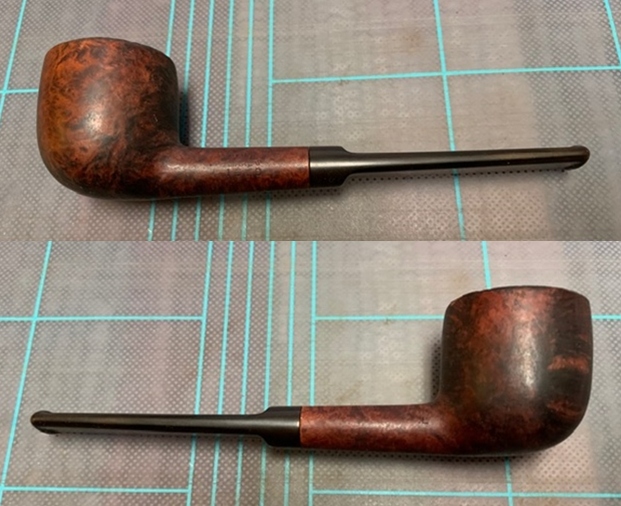
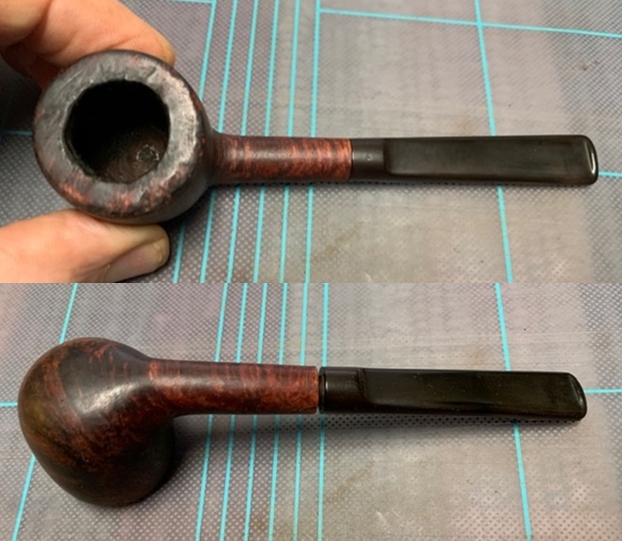 I took some close up photos of the rim top and also of the stem surface. I wanted to show what cleaned bowl and rim top looked like. The rim top shows damage and charring on the inner edge of the bowl. There is chipping and nicks on the inner and outer edges of the bowl. I also took close up photos of the stem to show the light tooth marks and the remaining oxidation on the stem surface.
I took some close up photos of the rim top and also of the stem surface. I wanted to show what cleaned bowl and rim top looked like. The rim top shows damage and charring on the inner edge of the bowl. There is chipping and nicks on the inner and outer edges of the bowl. I also took close up photos of the stem to show the light tooth marks and the remaining oxidation on the stem surface.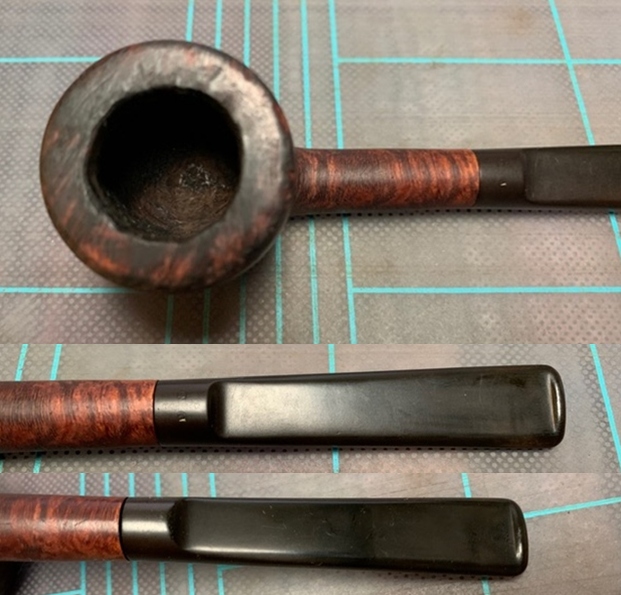 I took photos of the stamping on both sides of the shank and it is clear and readable. It is stamped as noted above.
I took photos of the stamping on both sides of the shank and it is clear and readable. It is stamped as noted above. 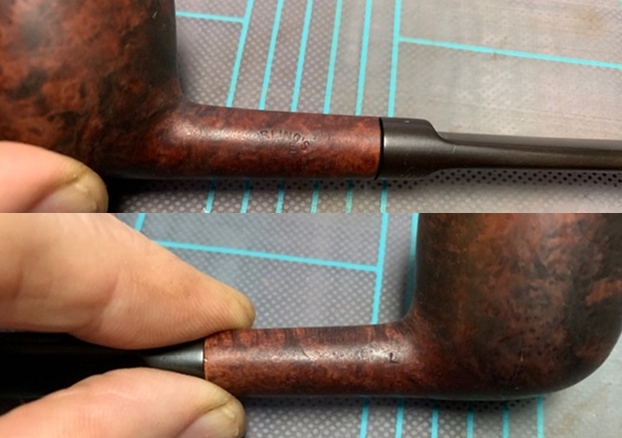 I removed the stem for the shank and took a photo of the bowl and stem to give a picture of what it looked like. You can see scratches in the stem surface.
I removed the stem for the shank and took a photo of the bowl and stem to give a picture of what it looked like. You can see scratches in the stem surface.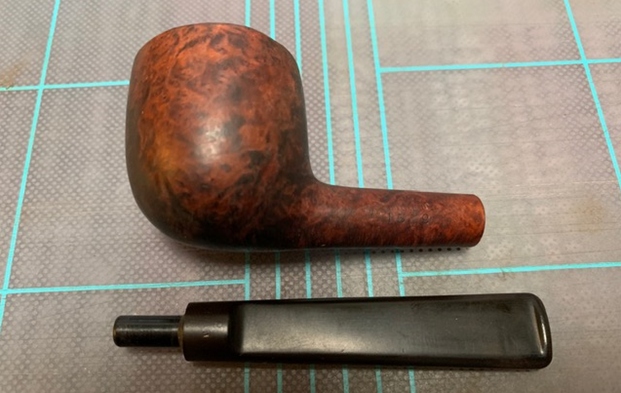 Now, on to my part of the restoration of this Barling’s Make Pot. I decided to start by dealing with the damage to the rim top and the inner edge of the bowl. I carefully topped the bowl on a board with 220 grit sandpaper to start removing the damage to the bowl. I used a folded piece of 220 grit sandpaper to clean up the damage to the bevel of the inner edge of the rim.
Now, on to my part of the restoration of this Barling’s Make Pot. I decided to start by dealing with the damage to the rim top and the inner edge of the bowl. I carefully topped the bowl on a board with 220 grit sandpaper to start removing the damage to the bowl. I used a folded piece of 220 grit sandpaper to clean up the damage to the bevel of the inner edge of the rim. 
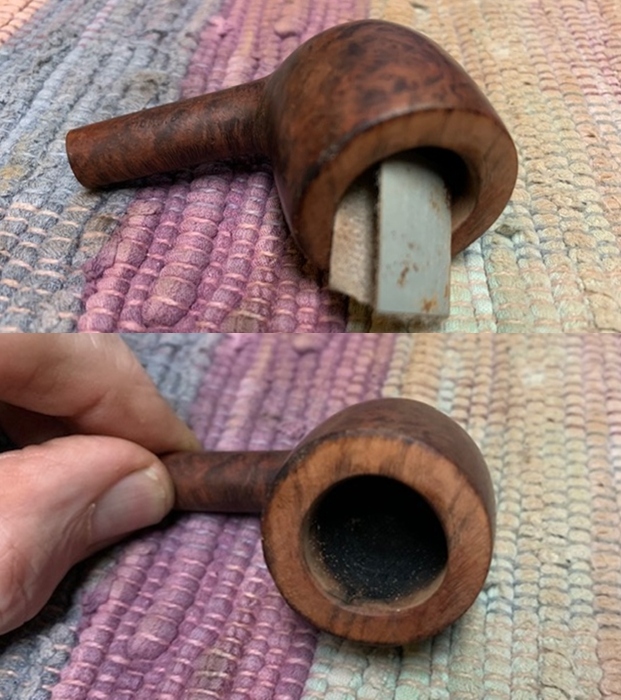 I polished the bowl and rim top with micromesh sanding pads – wet sanding with 1500-12000 grit pads and wiping the briar down with a damp cloth after each sanding pad.
I polished the bowl and rim top with micromesh sanding pads – wet sanding with 1500-12000 grit pads and wiping the briar down with a damp cloth after each sanding pad. 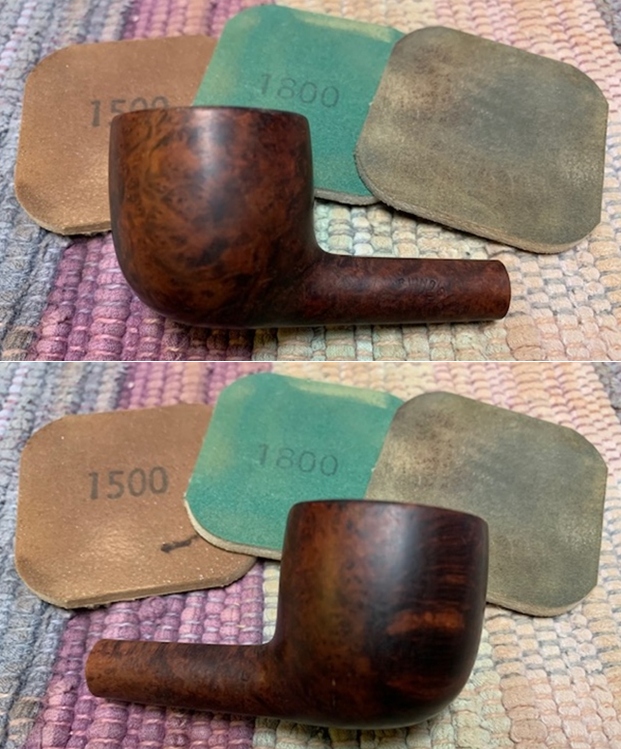
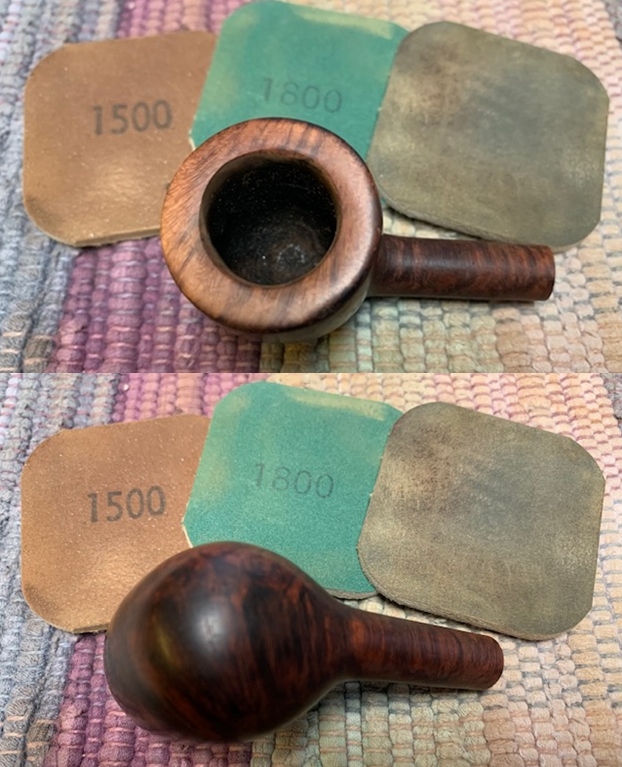 I stopped polishing for a short time and stained the sanded rim top with a Cherry and Walnut stain pen to blend it into the surrounding briar. Once the stain cured I polished the briar to further blend it into the bowl.
I stopped polishing for a short time and stained the sanded rim top with a Cherry and Walnut stain pen to blend it into the surrounding briar. Once the stain cured I polished the briar to further blend it into the bowl.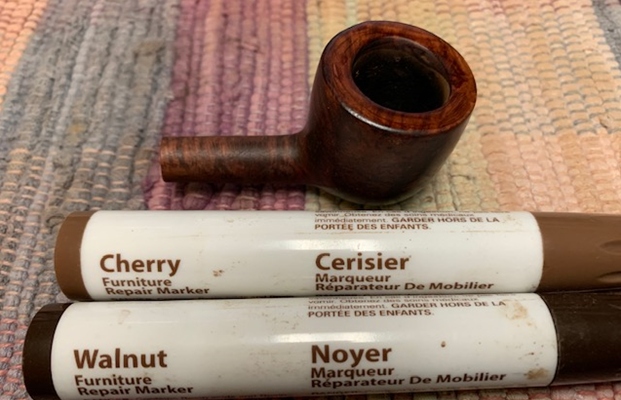 I went back to polishing the briar with the remaining micromesh sanding pads. I sanded the bowl and rim top with 3200-12000 grit pads and wiped the briar after each pad with a damp cloth.
I went back to polishing the briar with the remaining micromesh sanding pads. I sanded the bowl and rim top with 3200-12000 grit pads and wiped the briar after each pad with a damp cloth.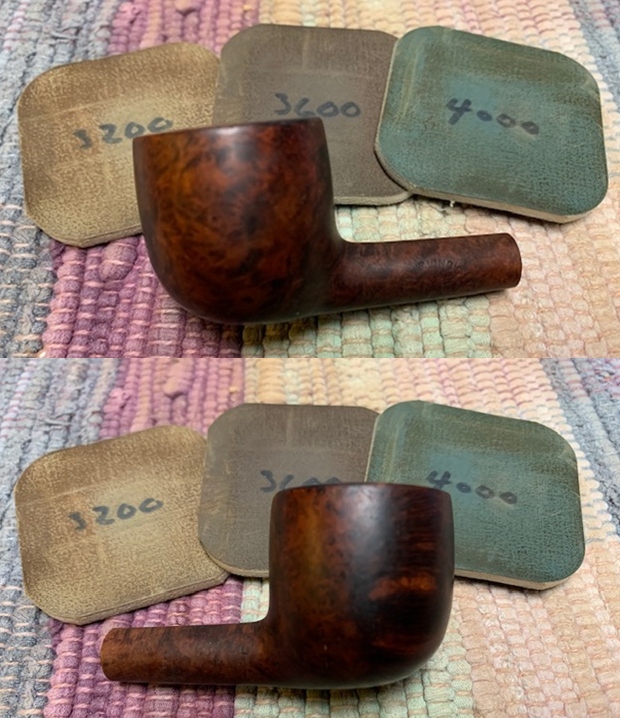
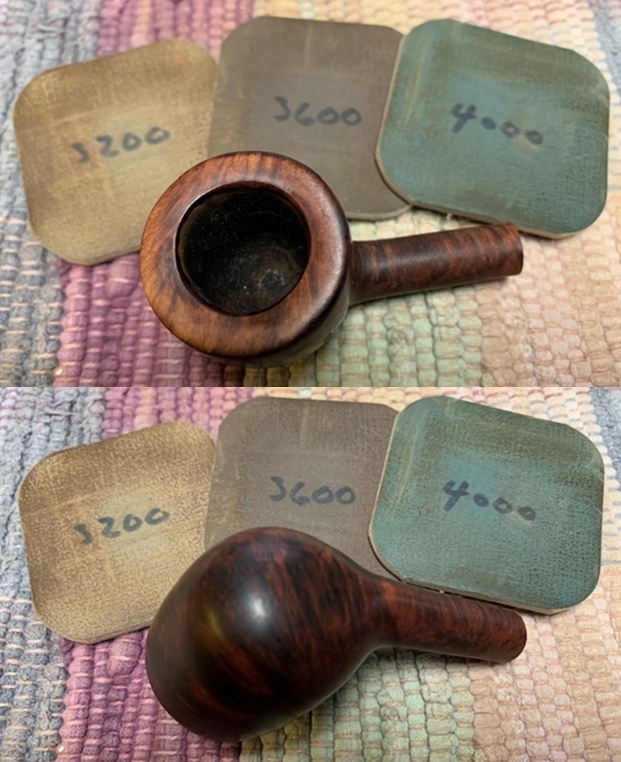
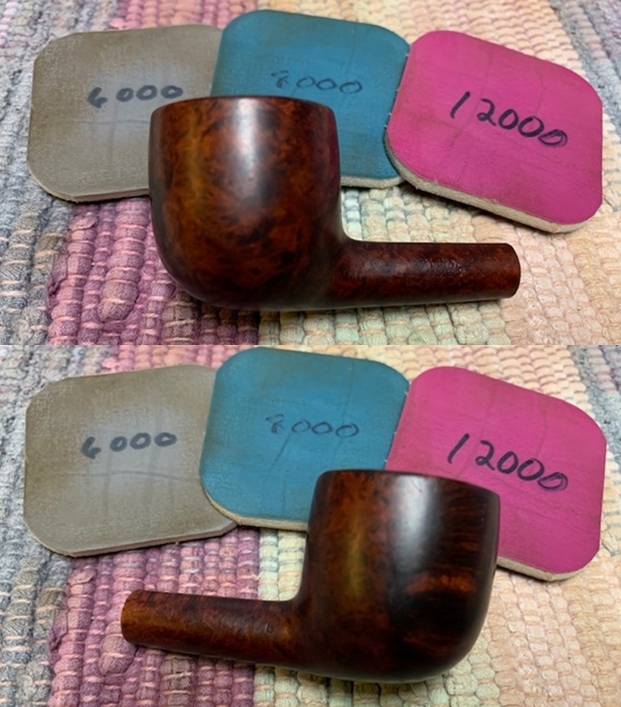
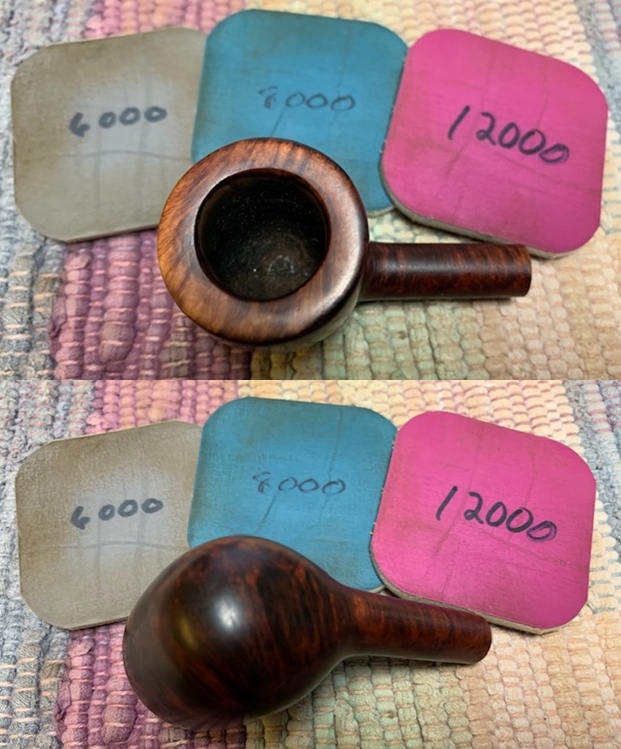 I rubbed the bowl down with Before & After Restoration Balm. I worked it into the surface of the bark on the bowl sides and shank with my fingertips to clean, enliven and protect it. I let the balm sit for a little while and then buffed with a cotton cloth and shoe brush to raise the shine.
I rubbed the bowl down with Before & After Restoration Balm. I worked it into the surface of the bark on the bowl sides and shank with my fingertips to clean, enliven and protect it. I let the balm sit for a little while and then buffed with a cotton cloth and shoe brush to raise the shine.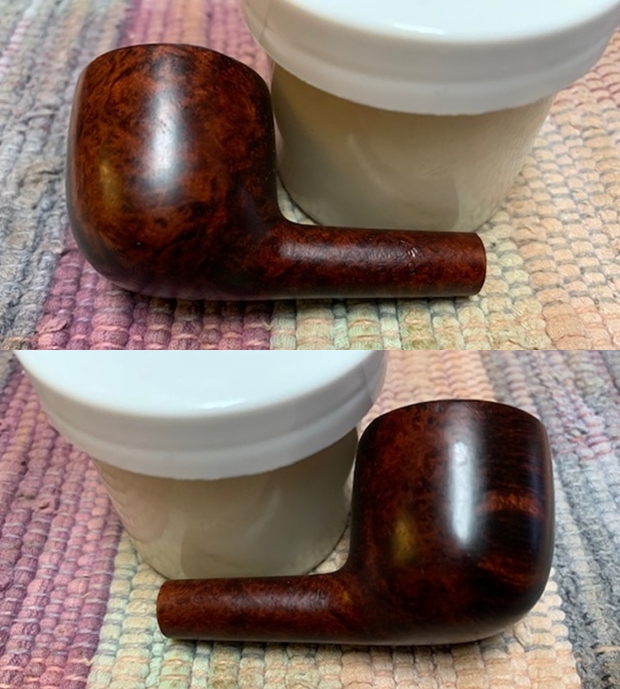
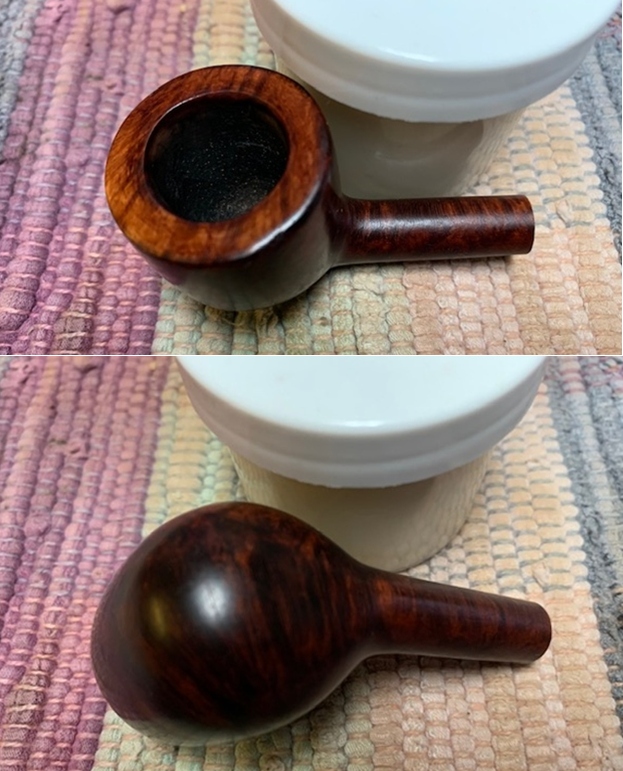
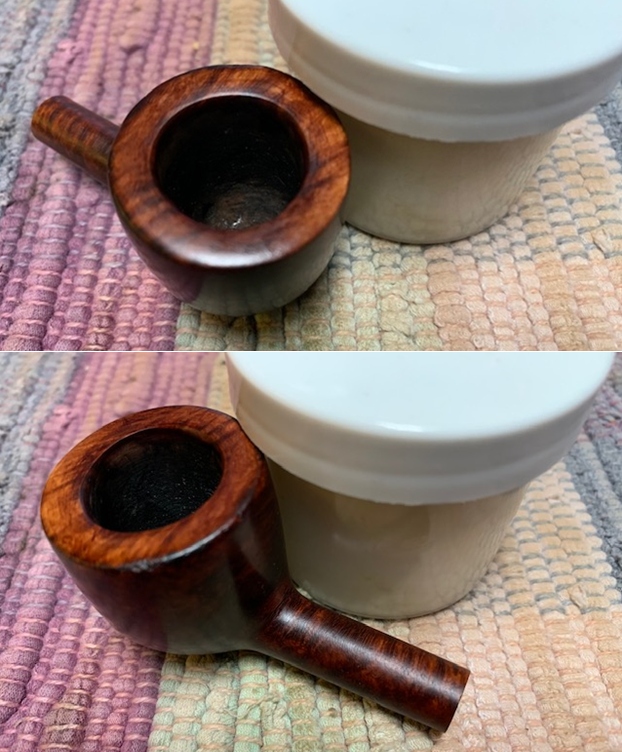 I set the bowl aside and turned my attention to the stem. I “painted” the surface of the stem with the flame of a lighter. The heat lifted the scratches and dents in the stem surface. It also had the added benefit of burning off some of the oxidation.
I set the bowl aside and turned my attention to the stem. I “painted” the surface of the stem with the flame of a lighter. The heat lifted the scratches and dents in the stem surface. It also had the added benefit of burning off some of the oxidation.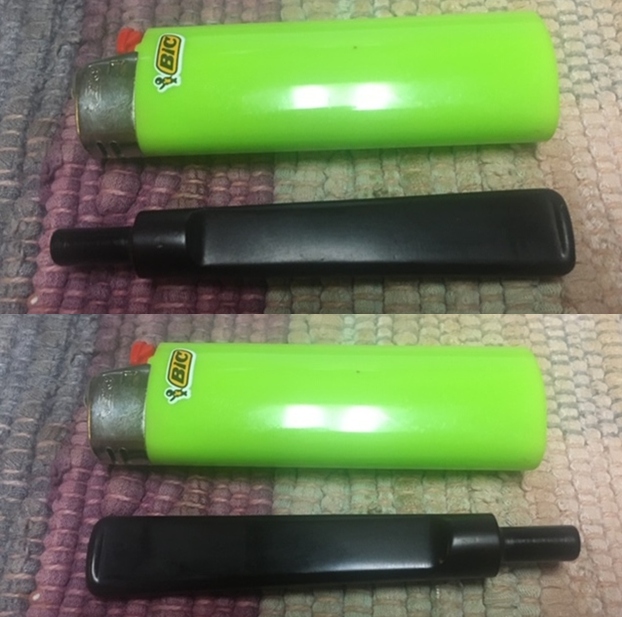 I polished the vulcanite with micromesh sanding pads – 1500-12000 grit pads. I wiped it down with a damp cloth after each sanding pad. I used Before & After Pipe Polish – both Fine and Extra Fine to further polish the stem. Even though I avoided the faint stamping of the Barling Cross there was not enough depth to the stamp to hold white paint. It is still visible but just not deep enough to restore.
I polished the vulcanite with micromesh sanding pads – 1500-12000 grit pads. I wiped it down with a damp cloth after each sanding pad. I used Before & After Pipe Polish – both Fine and Extra Fine to further polish the stem. Even though I avoided the faint stamping of the Barling Cross there was not enough depth to the stamp to hold white paint. It is still visible but just not deep enough to restore.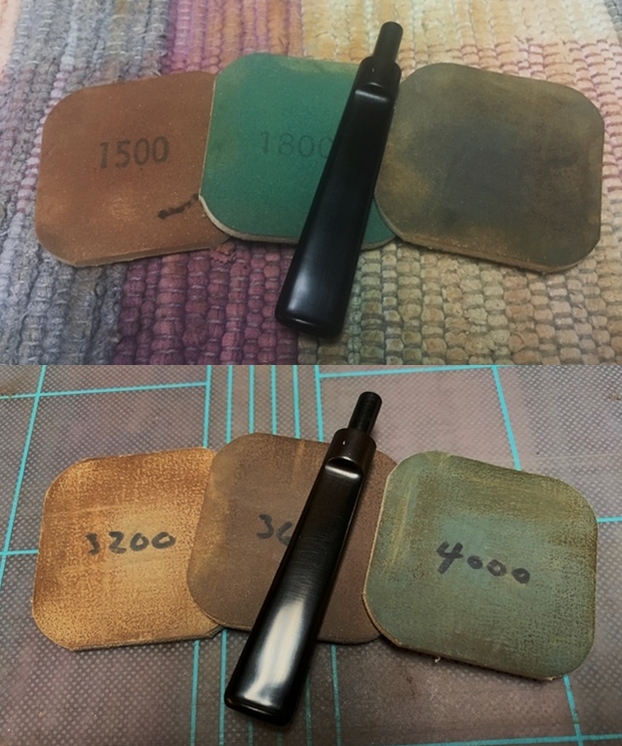
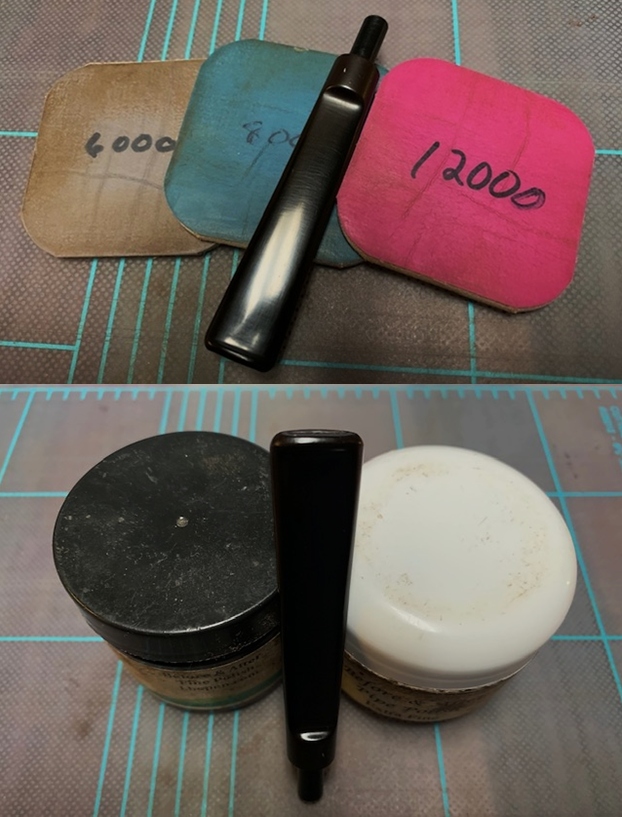 This Barling’s Make 1559 Pot (to me the quintessential Barling shape) from Bob Kerr’s estate turned out to be another great looking pipe. The finish on the pipe is in excellent condition and works well with the polished vulcanite taper oval stem. I put the stem back on the bowl and carefully buffed the pipe with Blue Diamond on the buffing wheel using a light touch on the briar. I gave the bowl and stem multiple coats of carnauba wax on the buffing wheel and followed that by buffing the entire pipe with a clean buffing pad. I hand buffed the pipe with a microfiber cloth to deepen the shine. The finished Barling’s Make Pot is delicate even if stamped with the “L” for large. It fits nicely in the hand and feels great. Give the finished pipe a look in the photos below. The dimensions of the pipe are Length: 5 ¼ inches, Height: 1 ¼ inches, Outside diameter of the bowl: 1 ¼ inches, Chamber diameter: ¾ of an inch. If you are interested in carrying on Bob’s legacy with this pipe send me a message or an email. I have 2 more of Bob’ pipes to go, perhaps one of those will catch your attention. Thanks for reading this blog and my reflections on the pipe while I worked on it. This is an interesting estate to bring back to life.
This Barling’s Make 1559 Pot (to me the quintessential Barling shape) from Bob Kerr’s estate turned out to be another great looking pipe. The finish on the pipe is in excellent condition and works well with the polished vulcanite taper oval stem. I put the stem back on the bowl and carefully buffed the pipe with Blue Diamond on the buffing wheel using a light touch on the briar. I gave the bowl and stem multiple coats of carnauba wax on the buffing wheel and followed that by buffing the entire pipe with a clean buffing pad. I hand buffed the pipe with a microfiber cloth to deepen the shine. The finished Barling’s Make Pot is delicate even if stamped with the “L” for large. It fits nicely in the hand and feels great. Give the finished pipe a look in the photos below. The dimensions of the pipe are Length: 5 ¼ inches, Height: 1 ¼ inches, Outside diameter of the bowl: 1 ¼ inches, Chamber diameter: ¾ of an inch. If you are interested in carrying on Bob’s legacy with this pipe send me a message or an email. I have 2 more of Bob’ pipes to go, perhaps one of those will catch your attention. Thanks for reading this blog and my reflections on the pipe while I worked on it. This is an interesting estate to bring back to life.